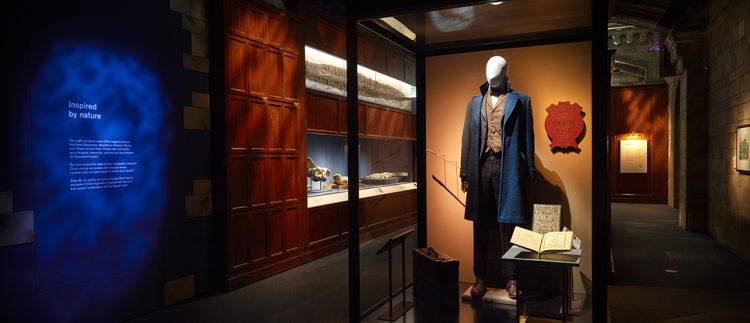I. A New Era of Cultural Engagement
When cultural institutions first ventured into the digital realm, online exhibitions were often little more than digitized brochures. What has changed in the last two decades is the maturation of cloud technology and immersive media, which has redefined not just the delivery of exhibitions but also the very experience of cultural participation.
Today’s cloud exhibitions often rival or surpass physical shows in terms of interactivity, inclusivity, and reach. Their success is best understood not through abstract theory but by examining real-world case studies—innovations that demonstrate how technology, design, and audience engagement come together to reshape cultural experiences.
II. Case Study 1: The British Museum’s “Unwrapping the Mummy” AR Program
1. The Problem
Ancient Egyptian mummies are among the most iconic exhibits in the British Museum, yet displaying them posed a curatorial dilemma. Physical unwrapping was invasive and destructive, while glass cases limited audience understanding of what lay within.
2. The Solution
The museum collaborated with medical imaging experts to conduct high-resolution CT scans of several mummies. These scans were integrated into an augmented reality (AR) app. Visitors—both on-site and online—could point their smartphones or tablets at a mummy’s image and “peel back” its layers digitally.
3. The Interactive Dimension
Users could explore layer by layer: linen wrappings, skeletal structure, preserved organs, funerary amulets—accompanied by contextual explanations. Remote visitors had access to the same tools through the museum’s cloud platform.
4. Impact and Lessons
The project exemplified how non-invasive digitization not only preserved fragile artifacts but also enhanced accessibility and learning. Visitor surveys reported a 40% increase in perceived engagement and a 35% improvement in understanding ancient burial practices.
III. Case Study 2: The Dunhuang Mogao Grottoes Digital Project
1. Preserving a Fragile Heritage
The Dunhuang caves in China, with their thousand-year-old Buddhist murals and sculptures, have long been at risk from erosion, humidity, and mass tourism.
2. Digital Preservation and Cloud Exhibition
Starting in the 1990s and accelerating after 2010, the Dunhuang Academy launched an ambitious digital heritage project. High-resolution 3D scanning, photogrammetry, and AI-based restoration were combined to create cloud-accessible virtual caves.
3. Interactive Experience
Audiences can explore the grottoes online using 360-degree navigation, zoom in on mural details, watch narrated stories of restoration, and even compare the caves’ appearance across decades to understand conservation efforts.
4. Cultural Significance
This project demonstrated that cloud exhibitions can serve both conservation and education goals, offering unprecedented access to sites that must be restricted in physical tourism. It also provided a model for heritage-rich yet environmentally fragile sites worldwide.
IV. Case Study 3: Louvre’s VR “Mona Lisa: Beyond the Glass”
1. Beyond the Barriers
The Mona Lisa is arguably the world’s most famous painting, but visitors to the Louvre often view it from a distance behind protective glass, amid large crowds.
2. The Immersive VR Approach
In 2019, the Louvre partnered with HTC Vive Arts to create a virtual reality experience that allowed visitors—both in the museum and online—to approach the painting in a digital space, view it in ultra-high resolution, and learn about Leonardo’s techniques and the artwork’s historical journey.
3. Enhancing Storytelling
The VR environment transported viewers to Renaissance Florence, letting them see the world as da Vinci might have seen it. This narrative immersion deepened understanding and appreciation beyond what a physical gallery could offer.
4. Broader Implications
The success of “Mona Lisa: Beyond the Glass” proved that cloud exhibitions can transform even the most familiar artworks into renewed cultural encounters, highlighting the potential of immersive storytelling in enhancing visitor experience.

V. Case Study 4: The Smithsonian’s Multi-User Virtual Museum
1. Responding to Global Audiences
As one of the largest museum complexes in the world, the Smithsonian Institution faced the challenge of serving a global audience without requiring travel to Washington, D.C.
2. Building a Persistent Virtual World
In 2021, the Smithsonian launched a multi-user virtual museum environment built on a gaming engine. Users, represented as avatars, could enter shared exhibition halls, attend live lectures, ask curators questions, and even participate in collaborative scavenger hunts.
3. Social Interaction as a Cultural Experience
The virtual museum showed that interactivity is not merely about technology but about social presence. By recreating the communal aspects of museum-going—discussion, group learning, shared excitement—the Smithsonian brought a sense of “place” into the digital realm.
4. Research Insights
A longitudinal study revealed that users who participated in social or interactive activities within the virtual museum reported higher retention of historical knowledge than those who passively consumed static online content.
VI. Case Study 5: The Global Online Biennale
1. Art Beyond Borders
Contemporary art biennales often face challenges of accessibility due to cost, travel, and limited exhibition durations. The COVID-19 pandemic prompted many organizers to rethink their approach.
2. A Fully Cloud-Based Event
The 2022 Global Online Biennale was conceived as a born-digital exhibition, hosted on a decentralized platform. Artists uploaded works ranging from digital paintings and video installations to VR sculptures and interactive AI-generated art.
3. Audience Participation
Visitors could not only view works but also interact with them—modifying algorithmic artworks in real time, leaving voice notes for artists, and participating in live critique sessions.
4. Democratizing the Curatorial Process
The biennale experimented with crowd-curation, allowing audiences to vote on thematic clusters and highlight emerging artists. This challenged traditional top-down curatorial authority and highlighted the potential of participatory culture.
VII. Cross-Case Analysis: Patterns of Success
1. Integration of Technology and Storytelling
All successful projects emphasized that technology is a means, not an end. High-resolution scans, VR, or AR were most impactful when woven into coherent narratives.
2. User-Centered Design
Cloud exhibitions that considered diverse user needs—accessibility, device compatibility, multilingual support—achieved higher engagement and broader reach.
3. Interactivity as Engagement Driver
Gamification, social features, and participatory storytelling consistently outperformed static, brochure-like digital exhibitions.
4. Sustainability and Archival Value
Cloud exhibitions often doubled as digital preservation initiatives, ensuring that cultural knowledge endures beyond the limits of physical sites.
VIII. Challenges Highlighted by Case Studies
- Equity of Access
While cloud platforms reach global audiences, disparities in internet infrastructure and device affordability persist, risking new forms of cultural exclusion. - Balancing Authenticity and Mediation
Some critics argue that virtual encounters lack the “aura” of original artifacts. Successful cases show that authenticity can be reinterpreted as context-rich engagement rather than mere physical proximity. - Funding and Commercial Models
Sustaining cloud exhibitions requires innovative financing—public subsidies, partnerships, and ethical monetization strategies that avoid commodifying culture. - Curatorial Training and Skill Gaps
The transition demands curators who are as fluent in interactive media as in traditional scholarship—a challenge for institutional capacity building.
IX. Future Prospects Inspired by These Cases
- Hybrid Cultural Ecosystems
Future exhibitions may fluidly combine in-person and cloud elements, offering visitors agency in choosing how to engage. - AI-Assisted Personalization
Algorithms will curate individualized pathways through exhibitions, responding to each visitor’s interests and learning style. - Global Collaboration Networks
Museums and cultural institutions may share collections in a shared virtual infrastructure, reducing duplication and broadening public access. - Interactive Education Platforms
Schools worldwide will integrate cloud exhibitions into curricula, enabling students to explore artifacts and historical reconstructions in depth. - Civic and Ethical Dialogue
As digital exhibitions influence cultural memory and identity, they will increasingly serve as platforms for public discourse, reconciliation, and social justice.
X. Concluding Reflections
These global case studies demonstrate that the shift to cloud exhibitions is not merely a technical upgrade but a cultural transformation. By breaking barriers of geography, scale, and temporality, cloud-based interactive experiences expand the reach of cultural heritage and reshape the relationships between creators, curators, and audiences.
The lesson is clear: the future of exhibitions lies not in replicating physical galleries online but in embracing the unique affordances of the cloud—interactivity, personalization, accessibility, and collective participation—to create cultural experiences that are as meaningful as they are inclusive.

















































